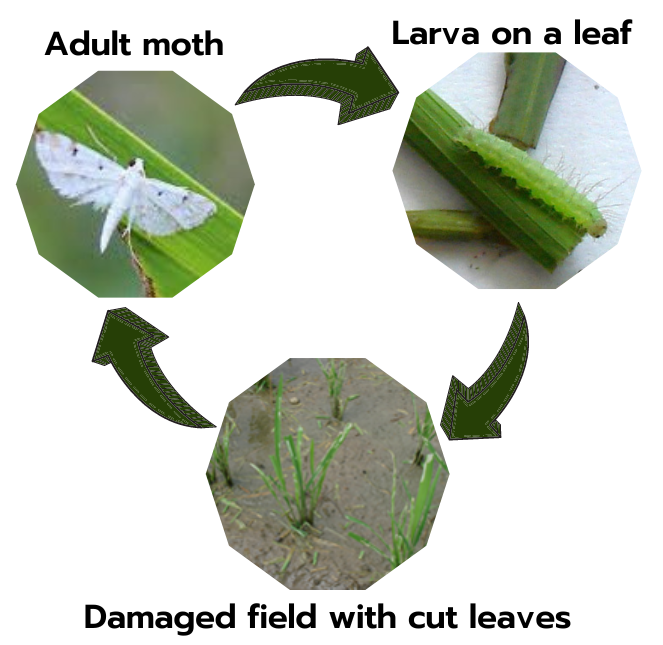
Adult moths have snowy white wings with a few light brown to black specks. The adults are nocturnal in habit. A single female lays an average of about 50 eggs.
The egg is light yellow, circular and somewhat flattened with a smooth surface. Before it hatches, the egg turns darker with two purplish dots, which represent the eyes of the developing larva. Average incubation period is 4 days.
The freshly hatched larva is pale cream with light yellow head. Five larval instars are completed in an average of 20 days. The full-grown larva is pale green with a semi-transparent skin and light brown prothoracic shield and head.
After each moult, larva replaces the leaf cases with new ones. Larva pupates within the leaf case and adult emerges in about a week.
The caseworm occurs only in rice fields with standing water. Larvae begin to feed shortly after hatching and start making leaf cases two days later. The freshly hatched larvae feed on the surface of the tender leaves, but later instars feed from within the case or on the surface of even the older leaves. Damage is caused by larvae feeding and cutting off the leaf tips for making leaf cases. Damage is characterized by ladder-like appearance of the removed leaf tissue, leaving the upper epidermis somewhat papery. Damaged plants occur in patches in the field. Heavily infested plants may still recover within a month, but are already stunted, produce fewer tillers and smaller panicles, and maturity is delayed.
The caseworm occurs mainly in rice fields with standing water.
As soon as this insect is visible, drain the stagnant water.
Drag a rope on the damaged field so that leaf cases along with larva gets dropped in water. Immediately, drain water along with leaf cases.
Mix 250 ml kerosene in standing water so that larvae gets killed.
Spray Quinalphos 25 EC @ 400 ml per acre or Chlorpyriphos 20 EC @ 500 ml per acre.